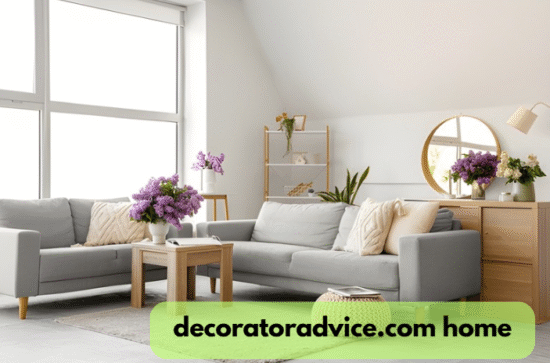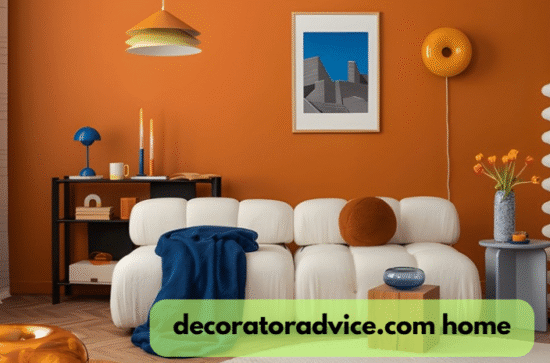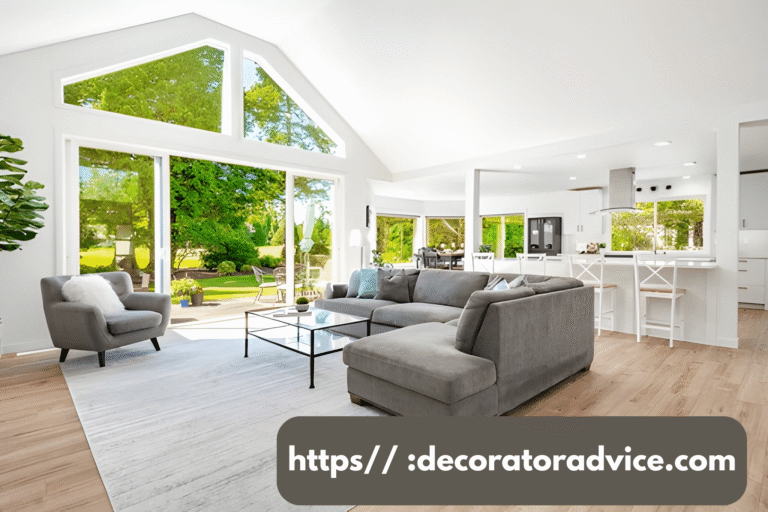Decoratoradvice.com home decor guide for simple living
If you want a calmer house that fits daily life, start with clear, usable advice from decoratoradvice.com home. This article shows how to use the site to shape rooms that feel simple, useful, and lived in. You will learn how to set priorities for each room, choose furniture that fits, pick a calm palette, avoid clutter, and keep your home working as your life changes. The guidance here draws on practical ideas and real examples so you can copy what works without wasting money or time. Use decoratoradvice.com home as a steady reference while you make small changes that add up to lasting comfort.
What simple living means in home decor

Simple living in a home means fewer items that have a clear purpose. It means picks that support rest, work, or play without adding visual weight. Simple living is not strict minimalism. It keeps a few items that matter while removing the rest. When a room works well, daily tasks flow with less friction. In a living room that follows simple living, seating supports how people use the room.
Surfaces stay clear unless they hold something meaningful. This approach makes cleaning easier and reduces decision fatigue. A home guided by simple living also grows more forgiving. When you buy an item, ask if it helps life or just fills space. That single filter reduces clutter over time. Use decoratoradvice.com home to learn practical ways to test what belongs in your rooms and what does not.
How to use decoratoradvice.com home as your practical guide
Start with the main categories on decoratoradvice.com home and pick one area to work on first. The site groups tips by room and by task so you can focus on a single fix at a time. Read a short article and then try a single small change in your room before moving on. The site offers product suggestions and step-by-step projects that suit varied budgets. If you want guidance on quick fixes, search the home tips section.
For deeper projects, use content that shows layouts and step-by-step planning. The site also lists helpful content under decoratoradvice .com about and decoratoradvice .com about us so readers can learn the story behind the brand and its ideas. You can even find useful partners decoratoradvice .com for design resources or collaborations.
Living room strategies that work for simple living

Focus a living room on how people use it each day. Choose seating that fits the room size and how many people sit there on a normal night. Keep a clear sightline between seating and the main focal point. Let light shape where you put reading chairs or plant stands. A rug can help anchor the space, but choose one that fits the scale and can be cleaned or replaced without stress.
Surfaces stay manageable when you limit items to essentials. A single tray can hold remote controls and a candle so the rest of the surface is clear. Add texture with a throw or a pillow instead of adding many small decor pieces. Swap decor seasonally to keep the room fresh without constant buying. Use small storage that blends into the style so items are accessible but hidden. Practical photos on decorator advice .com show how scale and circulation matter more than color choices.
Kitchen and dining choices that simplify daily life
A kitchen for simple living favors easy routines. Keep everyday dishes and tools within reach and store occasional items out of the way. Choose durable materials that clean easily so upkeep does not become a chore. Declutter countertops by moving rarely used appliances into cabinets.
Set a simple system for incoming items so mail or keys do not pile up. In the dining area, pick a table that fits the usual household size rather than the maximum guest number. If space is tight, use seating that tucks under the table to free walk space. Lighting matters more here than in many rooms. Bright, adjustable light helps with cooking and cleanup. Use decoratoradvice com guides to find layout ideas that work in both large and small kitchens.
Bedroom design that supports rest and clear thinking

Design a bedroom for sleep and low stress. Start with the bed and mattress since they matter most. Keep nightstand surfaces minimal so they do not draw attention at bedtime. Choose window coverings that control light and noise where needed. Limit technology near the bed unless it serves rest. Soft layered textiles give warmth without clutter when chosen in a simple palette. Keep a single focal art piece above the bed if you want visual interest. Built-in storage or under-bed drawers make seasonal rotation simpler. Use tips from about decoratoradvice .com to guide your material and lighting choices that promote calm and recovery.
Choosing a color palette that supports calm living
A calm palette starts with a neutral base and one or two accent hues. Neutrals give flexibility and reduce visual noise. Add warmth with wood tones or soft textiles rather than many bright colors. If you want a pop of color, use it in a pillow or a plant pot so it can be changed easily. Texture plays a large role in perception. Woven rugs, linen curtains, and matte painted walls create depth without busy patterns. decoration tips decoradhouse from decoratoradvice explain how texture and tone can refresh a space without full renovation. For small spaces, keep the wall color light and add contrast through art or a single painted door.
Furniture and layout that prioritise function and flow

Measure first and choose pieces that fit the room scale. Opt for furniture with clean lines to keep the room feeling open. Use a mat that fits beneath the front legs of the chair to anchor the seats. Allow for clear walkways so movement feels natural. Use multi-purpose furniture where possible to stretch value per piece. A bench can provide seating, storage, and a place to drop bags. If you own large items, arrange them to define zones rather than scatter many small pieces. Try a mock layout before buying or moving heavy items. This avoids wasted effort and returns that feel planned.
Decor and accessories while keeping things meaningful
Choose accessories that tell a story or serve a purpose. Art can be a single piece that draws the eye. A few curated books can double as decor and reading material. Plants add life and help air quality while staying affordable. Avoid filling every shelf with small items. Use negative space to let the important pieces stand out. When you rotate items, store extras in labeled boxes so you can switch without clutter. The best decor choices are those you can clean easily and that age well. decoradtech smart home ideas by decoratoradvice can also blend technology with comfort to make your space more functional and efficient without losing simplicity.
Budget smart and sustainable choices that last

Save where it makes sense and spend where it matters. Invest in a good mattress and sofa because those items get daily use. Save on accent pieces that change with trends by buying secondhand or making simple DIY updates. Choose materials that can be repaired rather than replaced whenever possible. Repairing a chair or refinishing a table often costs less than buying new and keeps a personal feel in the room. Look for energy-saving bulbs and long-wearing textiles to reduce ongoing costs. Making gradual improvements keeps your finances steady and your home evolving.
Keeping simplicity over time and common mistakes to avoid
Create routines that prevent clutter from returning. A weekly ten-minute tidy keeps surfaces clear. Rotate decor seasonally rather than continually buying new items. Avoid buying to match a trend that will age quickly. Resist the urge to fill empty corners immediately. Empty space is part of calm design. Common mistakes include ignoring scale and choosing too many similar small items that create visual static. Fix those by slowing down purchases and keeping purpose as your main filter. The practices on decoratoradvice .com home encourage measured changes and show how small edits can refresh a room without waste.
Bringing it together with decoratoradvice.com home
Simple living in home decor is a steady practice. Use decoratoradvice.com home to pick one fix at a time. Measure first, think of daily use, and prefer pieces that last. Keep surfaces clear and use texture to add warmth rather than clutter. When you work room by room, the effort stays manageable and the results compound. Over time a clear set of choices replaces guesswork, and the home becomes a place that supports life rather than distracts from it. Start with one small project today, and let decoratoradvice.com home guide you toward a simpler, more peaceful home.







